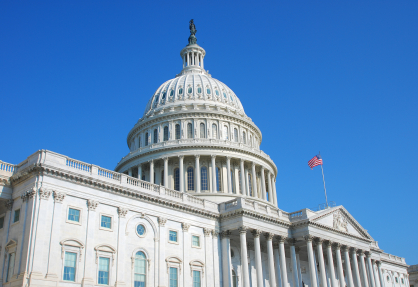The Student Aid and Fiscal Responsibility Act of 2009
Five reasons why the aid act may be bad for students.
There has been a pause in Washington as all eyes focus in on the healthcare debate. But very soon the Senate will be taking up an important measure related to college students and financial aid that was previously approved by the House.
TheMiddleClass.org offers the following summary of that bill, The Student Aid and Fiscal Responsibility Act of 2009:
The Student Aid and Fiscal Responsibility Act terminates the Federal Family Education Loan program, which provides subsidies and guarantees to private lenders that make student loans. Instead, the federal government would issue student loans directly to borrowers. Ending the subsidization program would save the government $87 billion over ten years. The Act ensures that interest rates on student loans remain affordable. Additionally, the legislation increases the maximum Pell Grant, a need-based grant designed for lower-income students, from $5,350 in 2009 to $5,550 in 2010 and $6,900 in 2019.
The Student Aid and Fiscal Responsibility Act includes funds for programs to encourage completion of college and subsequent employment, particularly for students from underrepresented backgrounds; for Historically Black Colleges and other minority-serving institutions; for early-childhood education; and for school modernization and repair. The bill also provides funds for improving the community college system. The legislation simplifies the Free Application for Federal Student Aid (FAFSA), which determines eligibility for student aid.
Such a summary has most folks taking the stance that the recent approval of the legislation by Congress is a massive step forward for students and families. As but one example, the Seattle Times offered extremely high praise, noting that “Congress’ overhaul of the college student-loan system offers welcome relief to students at risk of drowning in debt.”
College students backing SAFRA recently put together a YouTube video:
Certainly the legislation borders on the historic. Terry Hartle, senior vice president at the American Council on Education, indicated that the legislation “is the biggest change in federal loans for higher education since 1965, when the original program was created.”
But those following the issue realize that support for the legislation is falling along party lines: Democrats in support, Republicans in opposition. Therefore, one can quickly surmise that the new program conflicts with certain conservative principles.
Perhaps even more importantly, as the legislation becomes clearer many others, irrespective of party affiliation, have begun questioning this massive change. Indeed, after listening to those critics, we too have begun to wonder aloud.
Is the legislation really a positive step for students and their families?
Issue One – Categorizing the Middle Man as a Corporate Monster
One highly touted aspect of the legislation is the move to make the federal government the direct lender to students. In taking this step, the goal is to remove the so-called ‘middlemen’ from the loan process.
Banks are certainly pushing back, after all college loans have served two purposes. The interest on the initial loan is but one positive element for banks. A second and perhaps larger segment has to be the opportunity to create new customers.
But while most equate banks and profits with the middlemen term, the fact is there are many local agencies handling the loan process for students. Most are nonprofits, working to ensure that the loan process, from borrowing through repayment, goes smoothly.
The legislation as currently enacted eliminates all agencies handling these funds including some highly-valued nonprofits. For example, one such nonprofit, the New Hampshire Higher Education Assistance Foundation (NHHEA), works with nearly 30,000 New Hampshire students and parents each year, offering free college planning and information related to financial literacy and financial aid.
But under the proposal, intuitions such as NHHEAF would also be eliminated.
Issue Two – A Potential Increase in Loan Defaults
As noted previously, these local nonprofit centers focus on educating students in all financial matters. They not only offer financial literacy programs for student borrowers and financial aid preparation for students and their families, they also offer programs that promote early college awareness.
Such training goes a long way in terms of developing greater student understanding of the loan process. As but one example again, NHHEAF can claim one of the lowest default rates in the nation.
Needless to say, this loss of local services could well mean far more in the way of potential student loan defaults.
Issue Three – No Savings for Students or Families
Clearly there is major support for “eliminating subsidies to lenders,” particularly after what has transpired over the last year in the financial world and the role banks have played in it. But upon hearing of the elimination of these subsidies, the public immediately assumes the result will be a reduction in program expenses.
It appears instead of passing along savings to students, the current proposal may well cost students more. According to the Chronicle of Higher Education, the “federal government isn’t providing any breaks to the students” and ultimately will be making more off the program than lenders ever could.”
It may well be that the money raised will be doled out in the form of increased Pell Grants, but those grants will essentially be funded from students paying off other loans, not necessarily from increased support from the federal government.
In addition, those schools currently utilizing other loan programs will need to invest staff, time and money to change systems and processes. This would need to take place at the same time that schools have axed budgets to the bare bones.
The costs associated with implementing the program will likely be passed on to students through increased tuition and student fees.
Issue Four – Handling the Increased Demand
The legislation by Congress assumes that the government can effectively and efficiently step up and run the new program. According to Martha Holler, a spokesperson for Sallie Mae, in order to implement the proposal, “about 4,500 schools would have to convert lending systems. It’s not like putting a different disk in their PC; the whole system has to be reworked.”
 The result, “The U.S. Department of Education will be tasked with converting an average of nearly 500 schools a month over the course of a nine month period,” notes Tara Payne, Vice-President of Corporate Communications for NHHEAF. “Since the Direct Loan program’s inception in 1993, roughly 1,600 schools have been converted over a 16 year time-frame.”
The result, “The U.S. Department of Education will be tasked with converting an average of nearly 500 schools a month over the course of a nine month period,” notes Tara Payne, Vice-President of Corporate Communications for NHHEAF. “Since the Direct Loan program’s inception in 1993, roughly 1,600 schools have been converted over a 16 year time-frame.”
Issue Five – Increasing the National Debt
According to the Office of Management and Budget (OMB), under budget proposals that include the switch to 100-percent Direct Lending, the debt held in the Government’s various Direct Loan accounts is expected to rise from $632 billion in FY 2009 to $1.58 Trillion in FY 2019, an increase of more than $900 billion. Therefore, nationalizing the direct loan program will add substantially to the national debt over the next decade.
This means that those who benefit from the loans will actually pay twice, once when paying off the original loan and a second time when he or she pays the taxes necessary to eliminate the ever increasing national debt.
Of course some insist that the basis of the proposal is to deal with the larger budget issues, that any savings created by program changes will be used to plug budget gaps instead of providing additional funds for higher education.
Questioning the Change
These five issues have us and others questioning the government take-over of a public-private program that has seemingly supported students and schools, especially those who have borrowed judiciously in the past.

